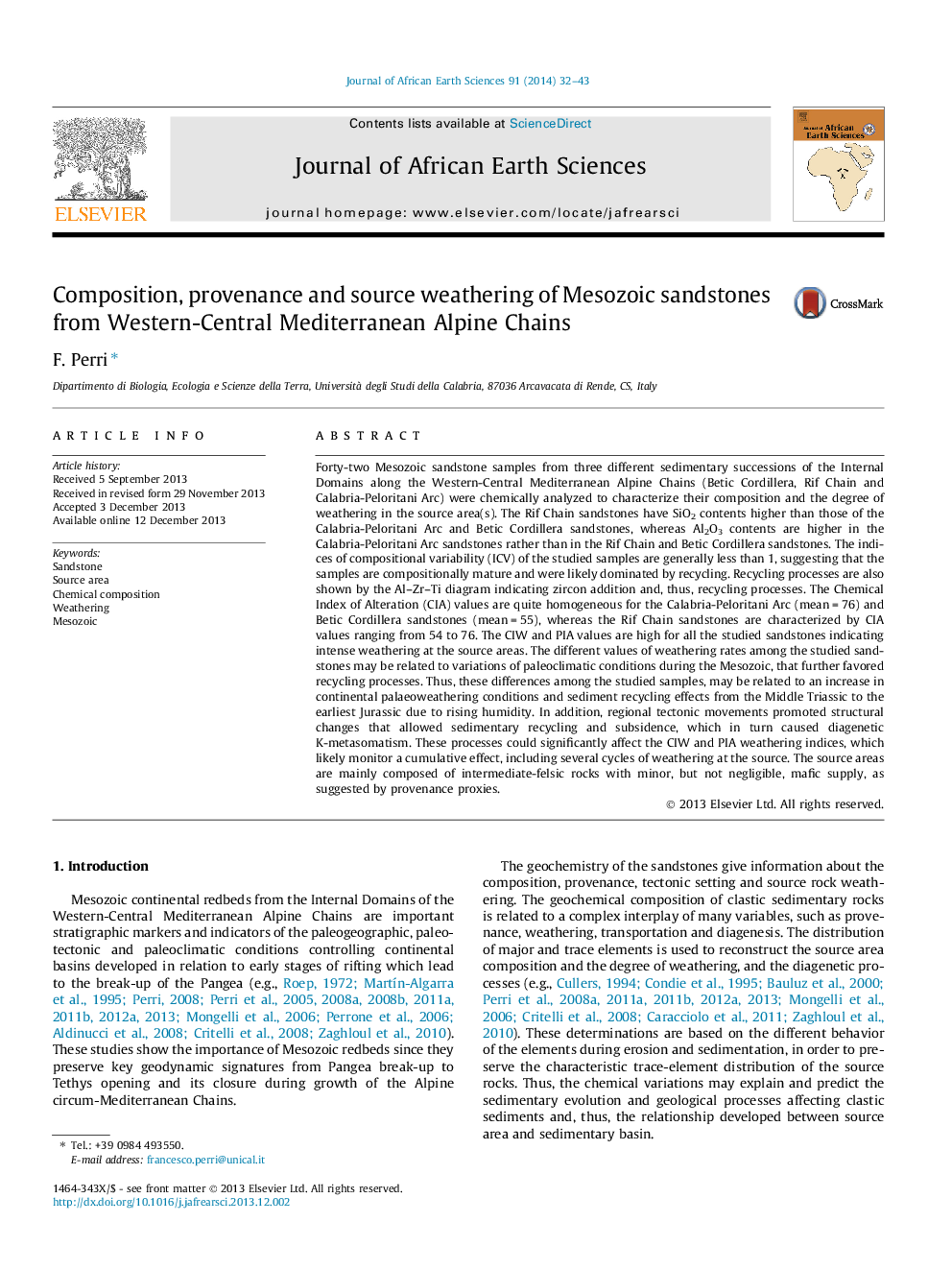| کد مقاله | کد نشریه | سال انتشار | مقاله انگلیسی | نسخه تمام متن |
|---|---|---|---|---|
| 4728757 | 1640215 | 2014 | 12 صفحه PDF | دانلود رایگان |
• We examine Triassic redbed sandstones of the Mediterranean Alpine Chains.
• These continental sandstone redbeds made part of the Mesomediterranean Microplate.
• Redbed features are used to study the Mesomediterranean Microplate evolution.
• Redbeds show key geodynamic signatures for the Alpine circum-Mediterranean Chains.
Forty-two Mesozoic sandstone samples from three different sedimentary successions of the Internal Domains along the Western-Central Mediterranean Alpine Chains (Betic Cordillera, Rif Chain and Calabria-Peloritani Arc) were chemically analyzed to characterize their composition and the degree of weathering in the source area(s). The Rif Chain sandstones have SiO2 contents higher than those of the Calabria-Peloritani Arc and Betic Cordillera sandstones, whereas Al2O3 contents are higher in the Calabria-Peloritani Arc sandstones rather than in the Rif Chain and Betic Cordillera sandstones. The indices of compositional variability (ICV) of the studied samples are generally less than 1, suggesting that the samples are compositionally mature and were likely dominated by recycling. Recycling processes are also shown by the Al–Zr–Ti diagram indicating zircon addition and, thus, recycling processes. The Chemical Index of Alteration (CIA) values are quite homogeneous for the Calabria-Peloritani Arc (mean = 76) and Betic Cordillera sandstones (mean = 55), whereas the Rif Chain sandstones are characterized by CIA values ranging from 54 to 76. The CIW and PIA values are high for all the studied sandstones indicating intense weathering at the source areas. The different values of weathering rates among the studied sandstones may be related to variations of paleoclimatic conditions during the Mesozoic, that further favored recycling processes. Thus, these differences among the studied samples, may be related to an increase in continental palaeoweathering conditions and sediment recycling effects from the Middle Triassic to the earliest Jurassic due to rising humidity. In addition, regional tectonic movements promoted structural changes that allowed sedimentary recycling and subsidence, which in turn caused diagenetic K-metasomatism. These processes could significantly affect the CIW and PIA weathering indices, which likely monitor a cumulative effect, including several cycles of weathering at the source. The source areas are mainly composed of intermediate-felsic rocks with minor, but not negligible, mafic supply, as suggested by provenance proxies.
Journal: Journal of African Earth Sciences - Volume 91, March 2014, Pages 32–43
